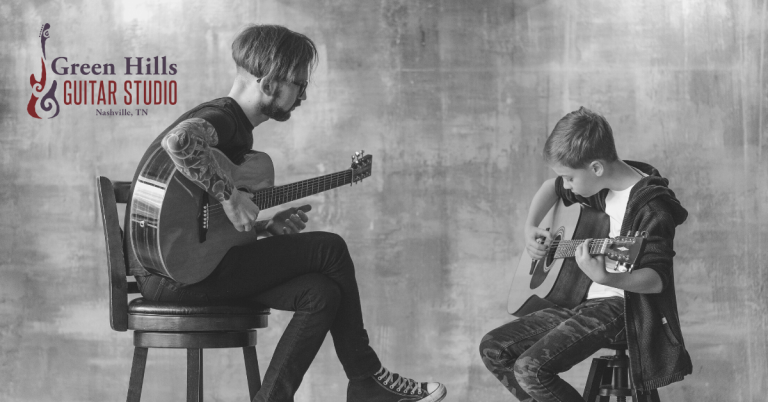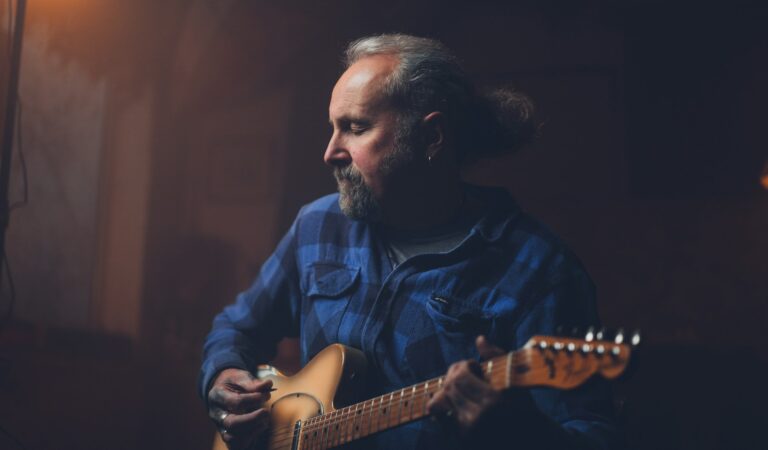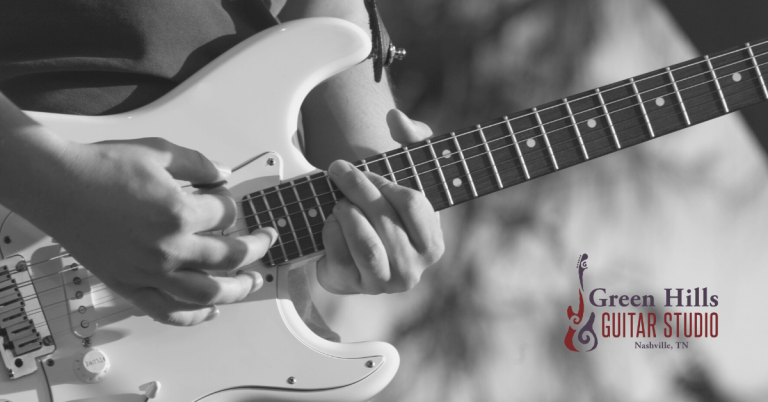Tips for Playing Guitar Like A Horn Player
Adding horn-like qualities to your guitar solos can take your playing to a new level of expressiveness. Horn players naturally focus on dynamics, phrasing, articulation, and tone to convey emotion. By adopting some of these characteristics, you can create guitar solos that are richer, more evocative, and more memorable. In this guide, we’ll cover techniques and gear tips for playing guitar like a horn player so your solos stand out with character and depth.
Why Add Horn-Like Qualities to Guitar Solos?
Emulating horn players can bring a new depth and soulfulness to your guitar solos. Horn players focus heavily on dynamics, phrasing, articulation, and musical vocabulary—qualities that can make a solo feel like a story rather than just a series of notes. By incorporating these elements, you can add a sense of flow and melody that keeps listeners engaged.
Many renowned guitarists have drawn inspiration from horn players to achieve a unique, expressive sound. For instance:
- Carlos Santana often used long, sustained notes and dynamic shifts to emulate the vocal quality of horn lines, creating powerful and emotive solos.
- John McLaughlin also embraced horn-like phrasing, particularly in his jazz fusion work, to add a melodic and rhythmic complexity to his solos.
- Jeff Beck frequently explored horn-inspired techniques, especially in his later work, incorporating phrasing, bends, and vibrato to give his guitar a “singing” quality.
By adopting a similar approach, you can create solos that feel richer, more nuanced, and ultimately more memorable.
Technique Tips for Horn-Like Guitar Solos
Let’s start with some core techniques that can bring out the warmth and expression often associated with horn instruments. Each of these tips builds on your ability to add dynamics, emotion, and individuality to your playing.
1. Focus on Dynamics
Dynamics are a cornerstone of horn-like expression. Experiment with playing both loudly and softly within the same solo, and shift the volume naturally as you play to add depth.
- Use Soft and Loud Passages: Incorporate sections where you play gently, then gradually build up volume, just as a horn player would.
- Try Volume Swells: Volume pedal swells or slow, controlled picking can mimic the way a horn’s volume rises and falls.
2. Incorporate Phrasing Pauses
Horn players need to pause to breathe, which creates natural phrasing. Mimicking this will make your solos sound less like a stream of notes and more like a conversation.
- Add Intentional Breaks: Include small rests in your solo to emphasize certain notes or phrases.
- Avoid Overplaying: Letting certain notes or lines “breathe” creates a sense of anticipation and gives each note more weight.
3. Emphasize Vibrato and Bends
Vibrato and bends are essential to adding expressiveness, especially for horn-like qualities. These techniques allow you to mimic the way a horn’s pitch can waver and bend, creating a more emotional sound.
- Vibrato: Apply vibrato on held notes to add warmth and depth. Experiment with different speeds and widths of vibrato to create a more nuanced sound.
- Bends: Use slow bends to create tension and release, similar to the way a horn player might gradually reach a note.
4. Explore Articulation Techniques
Articulation refers to how you start and end each note, which can greatly impact the feel of your solo.
- Legato: For smoother, more connected notes, try using legato phrasing (hammer-ons, pull-offs, and slides).
- Staccato: To give your solo a more punchy feel, use short, detached notes in certain phrases, adding contrast.
Gear Settings for a Richer, Horn-Like Tone
Achieving a horn-like tone isn’t just about technique; your gear settings play a crucial role in the overall sound. Here’s how to adjust your equipment for a warm, expressive tone that evokes the feel of a horn.
1. Adjust Your Amp Settings
Your amp’s EQ can make a big difference in crafting a warm, smooth tone that works well for expressive solos.
- Bass: Keep the bass level moderate. Too much can muddy the tone, while too little can make it sound thin.
- Mids: Boost the mid frequencies for a fuller, more horn-like quality, as horns often sit in the midrange.
- Treble: Dial back the treble slightly to avoid harshness and keep the tone warm.
2. Use Reverb and Delay for Depth
Effects like reverb and delay can add depth to your tone, giving it a more open, resonant quality similar to a horn in a concert hall.
- Reverb: A subtle reverb can give your sound an airy, natural quality. Avoid overly heavy reverb, which can drown out the expressiveness.
- Delay: A light delay with a short decay time can add a sense of space without overpowering your phrasing.
3. Try a Compressor for Smoother Dynamics
A compressor helps even out the volume of each note, making your dynamic range more consistent and controlled. It’s especially helpful when aiming for horn-like consistency in volume.
- Set a Low Compression Ratio: A low compression setting allows your dynamics to come through while still adding some smoothness.
- Experiment with Sustain: Use the sustain feature to hold notes longer, giving you more freedom to experiment with vibrato and phrasing.
4. Tone Shaping with Pedals
Certain guitar pedals can help add warmth and texture or even emulate a horn-like resonance.
- Overdrive: A light overdrive can give your tone some warmth and grit, similar to the natural warmth of a brass instrument.
- EQ Pedal: Use an EQ pedal to fine-tune your tone, focusing on midrange frequencies for a more horn-like quality.
- Chorus or Phaser: A subtle chorus or phaser can add movement to your tone, emulating the slight tonal shifts that occur naturally in horn playing.
Practicing Your Horn-Like Solo Style
Now that you have the techniques and gear settings down, here are some practical tips for working horn-like qualities into your playing style.
- Start with Simple Melodies: Try learning a simple melody played by a horn, like a jazz standard or blues riff, and adapt it to guitar.
- Focus on Expression Over Speed: The goal is to make every note count, so take it slow and prioritize feel over technical skill.
- Play Along with Records: Choose songs that feature horn solos, such as jazz or soul classics, and play along to emulate the phrasing and articulation. This will train your ear and help you match the feel of real horn players.
- Record and Listen Back: Recording your practice sessions lets you evaluate your tone, dynamics, and phrasing. Take note of where you could add more expressiveness or where certain techniques feel forced.
Suggested Horn Players to Inspire Your Guitar Solos
Listening to masterful horn players can provide invaluable insight into how to approach phrasing, dynamics, and tone in your solos. Here are some influential horn players whose styles and techniques are perfect for inspiring a more expressive guitar sound.
- Miles Davis (Trumpet): Known for his incredible use of space, phrasing, and subtle dynamics, Miles Davis often focused on “saying more with less.” Listening to his work, especially on albums like Kind of Blue, can teach you how to create tension and release through minimalist, melodic phrasing.
- John Coltrane (Saxophone): Coltrane’s powerful tone and fluid phrasing make him a great inspiration for expressive guitar solos. His work on tracks like “My Favorite Things” and “A Love Supreme” shows how a balance of fast runs and soulful phrasing can create a compelling sound.
- Charlie Parker (Saxophone): One of the most influential players in jazz, Parker’s “bebop” style emphasized rapid, intricate phrases while maintaining a smooth, articulate sound. His solos, filled with rhythmic ornamentation and harmonic inventiveness, are a great study for creating memorable solos.
- Freddie Hubbard (Trumpet): Hubbard’s energetic, bold tone brings a bright and assertive quality to his solos. His ability to switch between soft, subtle notes and powerful blasts can teach guitarists how to incorporate dynamic contrast effectively.
- Stan Getz (Saxophone): Getz’s warm, lyrical tone—especially in bossa nova classics like “The Girl from Ipanema”—is a great example of how to play melodically while maintaining flow. His smooth phrasing and relaxed articulation are ideal for guitarists looking to develop a softer, more flowing style.
- Chet Baker (Trumpet): Baker’s gentle, almost vocal-like approach to the trumpet is perfect for guitarists aiming to create a mellow, emotive sound. His tone on ballads like “My Funny Valentine” can inspire guitarists to play with more subtlety and emotional depth.
- Cannonball Adderley (Saxophone): Known for his soulful, bluesy sound, Adderley’s playing is both powerful and lyrical. His work on tracks like “Mercy, Mercy, Mercy” can help guitarists understand the importance of rhythm and groove in a solo.
- Wayne Shorter (Saxophone): Shorter’s adventurous solos, often filled with unexpected twists, provide a great example of storytelling through music. His phrasing and unique tonal choices make him a standout for guitarists looking to add complexity and intrigue to their solos.
- Louis Armstrong (Trumpet): Armstrong’s expressive, joyful style, full of vibrato and melodic embellishments, reminds us that technique should serve emotion. Listening to his playing on classics like “What a Wonderful World” and “Stardust” shows how to connect with listeners through genuine expression.
- Dexter Gordon (Saxophone): Gordon’s rich, resonant sound and smooth phrasing on ballads like “I Guess I’ll Hang My Tears Out to Dry” make him an ideal inspiration for creating guitar solos that flow naturally and breathe with emotion.
These horn players have each crafted a distinct voice, blending technique with emotion in ways that can add depth to your guitar playing. Studying their solos and focusing on how they handle phrasing, dynamics, and articulation can help you bring more horn-like qualities into your own guitar solos.
The Coda
Adding horn-like qualities to your guitar solos is a powerful way to bring new life to your playing. By focusing on dynamics, phrasing, articulation, and tone, you can achieve a more soulful, expressive sound that resonates with listeners. Whether you’re playing jazz, blues, or rock, these techniques and settings can help you take your solos to a new level.
Interested in refining your solo style further? Contact Green Hills Guitar Studio for personalized guitar lessons in Nashville, TN, or online. Work one-on-one with our experienced instructors to bring out the best in your playing!






